Charles Robert Malden, was a nineteenth-century British naval officer, surveyor and educator. He is the discoverer of Malden Island in the central Pacific, which is named in his honour. He also founded Windlesham House School at Brighton, England.

Louis Claude de Saulces de Freycinet was a French Navy officer. He circumnavigated the Earth, and in 1811 published the first map to show a full outline of the coastline of Australia.
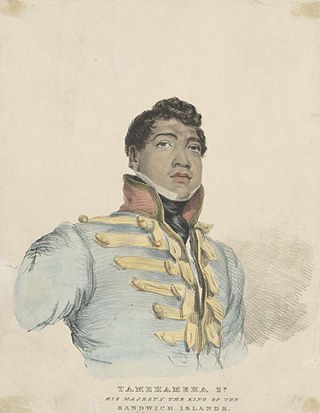
Kamehameha II was the second king of the Kingdom of Hawaii from 1819 to 1824. His birth name was Liholiho and full name was Kalaninui kua Liholiho i ke kapu ʻIolani. It was lengthened to Kalani Kaleiʻaimoku o Kaiwikapu o Laʻamea i Kauikawekiu Ahilapalapa Kealiʻi Kauinamoku o Kahekili Kalaninui i Mamao ʻIolani i Ka Liholiho when he took the throne.

Kamehameha III was the third king of the Kingdom of Hawaii from 1825 to 1854. His full Hawaiian name was Keaweaweʻula Kīwalaʻō Kauikeaouli Kaleiopapa and then lengthened to Keaweaweʻula Kīwalaʻō Kauikeaouli Kaleiopapa Kalani Waiakua Kalanikau Iokikilo Kīwalaʻō i ke kapu Kamehameha when he ascended the throne.
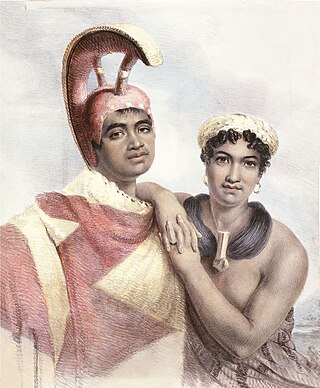
Kuini Liliha was a High Chiefess (aliʻi) and noblewoman who served the Kingdom of Hawaii as royal governor of Oʻahu island. She administered the island from 1829 to 1831 following the death of her husband Boki.

Kalama Hakaleleponi Kapakuhaili was a Queen consort of the Kingdom of Hawaiʻi alongside her husband, Kauikeaouli, who reigned as King Kamehameha III. She closed the baptismal name Hakaleleponi after the Biblical figure Hazzelelponi. Her name Kalama means "The Torch" in the Hawaiian language.

Maria Graham, Lady Callcott, was a British writer of travel books and children's books, and also an accomplished illustrator.

Jacques Étienne Victor Arago was a French writer, artist and explorer, author of a Voyage Round the World.
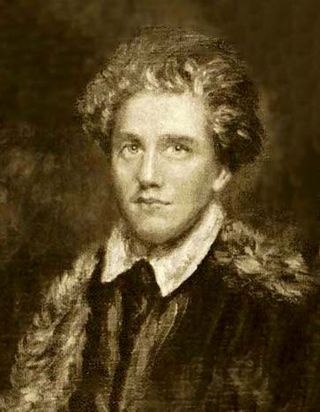
Robert Dampier (1799–1874) was a British artist and clergyman.

Don Francisco de Paula Marín was a Spaniard who became influential in the early Kingdom of Hawaii. Often called Manini, Marini or other variations, he became a confidant of Hawaiian King Kamehameha I. Marín acted as a jack-of-all-trades, sometimes even acting as a physician, probably without any formal education, and is credited with introducing many agricultural products.
Pauahi (c.1804–1826) was a member of the royal family of the Kingdom of Hawaii in the House of Kamehameha. Referred as Pauahi in her lifetime, she is often referred to as Kalanipauahi or Kalani Pauahi to differentiate her from her niece and namesake Bernice Pauahi Bishop.
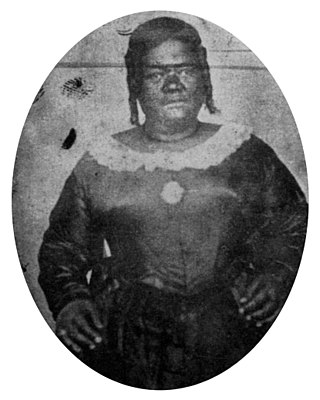
Keahikuni Kekauʻōnohi was a Hawaiian high chiefess who was a member of the House of Kamehameha. She was granddaughter to King Kamehameha I and one of the wives of Kamehameha II. Her Christian name is disputed; it is given as Mikahela in the 1848 Mahele Book and as Miriam in later sources.

High Chiefess Kapiʻolani was an important member of the Hawaiian nobility at the time of the founding of the Kingdom of Hawaiʻi and the arrival of Christian missionaries. She was one of the first Hawaiians to read and write, as well as sponsor of a church. She made a dramatic display of her new faith, which was the subject of a poem by Alfred, Lord Tennyson.
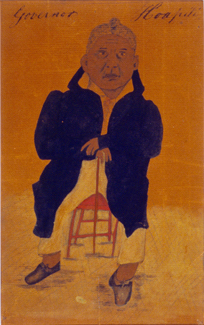
Ulumāheihei Hoapili was a member of the nobility during the formation of the Kingdom of Hawaii. He was a trusted military and political advisor to King Kamehameha I, known as "Kamehameha the Great". Although trusted with one of the last symbolic rites of the Hawaiian religion, he later became a supporter of Christian missionaries.

Naihe was the chief orator and councilor during the founding of the Kingdom of Hawaii. A champion athlete in his youth, he negotiated for peace at several critical times and helped preserve the remains of several ancient leaders.

HMS Blonde was a 46-gun modified Apollo-class fifth-rate frigate of 1,103 tons burthen. She undertook an important voyage to the Pacific Ocean in 1824. She was used for harbour service from 1850 and was renamed HMS Calypso in 1870, before being sold in 1895.
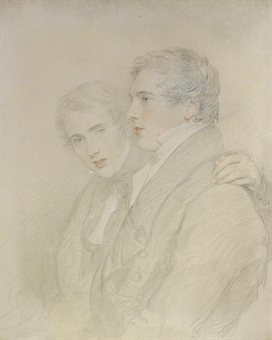
Andrew Bloxam was an English clergyman and naturalist; in his later life he had a particular interest in botany. He was the naturalist on board HMS Blonde during its voyage around South America and the Pacific in 1824–26, where he collected mainly birds. Later as a Church of England minister he lived in Warwickshire and Leicestershire and made significant contributions to the study of the natural history of the area. His special interest was in fungi and the genera Rubus and Rosa. His botanical author abbreviation is "A.Bloxam".

Hoʻolulu (1794–1844) was a member of the nobility during the formation of the Kingdom of Hawaii. He was a trusted advisor to King Kamehameha I, also known as "Kamehameha the Great", and was one of the select few to know his secret resting place. His descendants continue the tradition of guarding royal burials. A major cultural site in Hilo, Hawaii is named after him.

Cleopatra's Barge was the first oceangoing yacht built in the United States. It was built in 1816 at Salem, MA by shipbuilder Retire Becket for owner George Crowninshield Jr. Crowninshield died in 1817 after a single pleasure voyage to the Mediterranean; his brother Richard bought it, used it for two coastal trading voyages, and then sold it to Boston China traders Bryant & Sturgis and Capt. John Suter in early 1820. Suter sailed it to Hawai'i and sold it to Hawaiian monarch Kamehameha II for slightly more than a million pounds of sandalwood. Liholiho used it as his private yacht, renaming it Haʻaheo o Hawaiʻi in 1822 after a rebuild. Under an all-Hawaiian crew, Ha'aheo wrecked in Hanalei Bay, Kaua'i, Hawai'i in April 1824.
L'Aigle was launched in France in 1801, 1802, or 1803. The British Royal Navy captured her in 1809. From 1810 to 1817, she was a West Indiaman. From 1817 L'Aigle made four complete voyages as a whaler in the British Southern Whale fishery. On her third whaling voyage, she carried King Kamehameha II of Hawaii and Queen Kamāmalu with a number of their retainers and Hawaiian notables to England. She was lost on 6 March 1830 on her fifth whaling voyage.

















